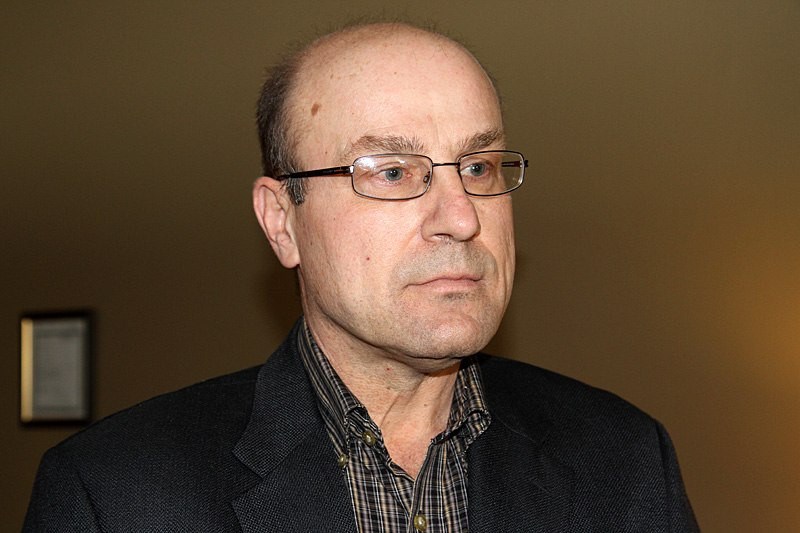To obtain maximum value from the Ring of Fire, the province needs to invest in infrastructure including an all-weather road, says Ontario’s finance minister.
Finance Minister Charles Sousa held a teleconference in Sault Ste. Marie Thursday in order to get input from organizations and stakeholders, which was part of the province’s pre-budget consultations. The teleconference was broadcasted to Thunder Bay and Sudbury.
It was the first consultation Sousa held outside of his riding of Mississauga South.
Prior to the consultation Sousa spoke to media and gave some information regarding the upcoming budget.
Sousa also spoke briefly about the Ring of Fire project.
“In order to succeed in maximizing the value of the Ring of Fire and the tremendous potential that exists here in the North, we have to make some investments,” he said via teleconference from Sault Ste. Marie.
“Negotiations are ongoing with proponents. What’s going to happen here in the North is going to have tremendous impact on the province and throughout Canada. That’s a $2 billion to $3 billion investment a portion of which the province is looking to invest as well.”
A recently released study concluded railway infrastructure, and not an all-season road, is the best option for Ring of Fire development. That study pointed out that while there is a more significant initial investment required for rail, the long-term cost savings make it a more economical option than an all-weather road.
Despite that study’s findings, Sousa said an all-weather road will be necessary in order to ship ore from the Ring of Fire. And that’s just one of the many issues they have to face.
“It’s not just the road. that’s part of the issue that’s before us,” he said. “There will also be issues about maybe having a railway. The other one is electricity. There’s many factors and those discussions are underway. I’m hopeful we’ll have some consequence that will provide important investment in the North to maximize the potential.”
Although he wouldn’t give a date as to when it would be tabled, he said he would release the budget when it was ready.
He vowed to work with both parties including the Progressive Conservatives who have already stated they would not support the budget.
Following the media portion of the conference, organizations and stakeholders were given a chance to give a presentation.
Mayor Keith Hobbs gave a presentation and spoke on a number of topics, many of which dealt with the city’s health-care needs but his main message was about the Ring of Fire.
Hobbs didn’t have a chance to talk to Sousa during the Ontario Good Roads Association conference so he said he was glad to speak to him during the teleconference.
He said he wanted to talk about infrastructure with the project specifically about the east-west and north-south roads.
“Mining is hitting Thunder Bay hard and the region hard,” he said. “We have to be prepared. I also spoke about co-operation between the federal and provincial governments. I met with Minister of FedNor Tony Clement last week and he met with Minister of Northern Development and Mines Michael Gravelle. That was long overdue. We talked about the expenditure sharing between the feds and the province. Infrastructure is a provincial and federal issue. Get together, get it right and let’s go forward.”
But not everyone was concerned about the Ring of Fire development.
Wade Petranik, CEO of Dryden Regional Health Centre and chair of the Ontario Hospital Association for small, rural, and northern hospitals, said it was a good opportunity to speak with Sousa and talk about the challenges some northern hospitals are facing.
One of those challenges is the health system funding reform. Petranik said there’s still many unanswered questions about the impacts the funding reform will have.
Petranik had suggested creating some financial stability for hospitals by increasing their budgets by three per cent annually or $15 million. He pointed out that hospital costs across the province are around $7 billion.
“During this time of transformation, the local hospitals and small remote communities are basically are a safety net for the communities,” he said.
“As we get tighter and tighter with the budgets, the system becomes more fragile. We’re concerned that if we don’t see this investment in community care that may put even more pressure on the regional rural centres such as Thunder Bay.”
He said the additional investment would help repair facilities and keep equipment up to date.
Petranik wanted Sousa to also look at the funding reform and take into consideration that broad policies don’t necessarily help small communities.
Wendy Talbot, CEO of NorWest Community Health Centres, wanted to make sure to let Sousa know that health care should be a main priority when putting the budget together.
“We have to look at the whole notion of people taking responsibility for their own health care, but also helping them to do that. We need to have a stronger focus on keeping people healthy and keeping them out of hospitals.”
In order to accomplish this, Talbot suggested the budget put more aside for health promotions.
Although she didn’t have a dollar figure in mind, she said health promotion makes up about three per cent of the Ministry of Health and Long-Term Care’s budget and would like to see that number increased.
